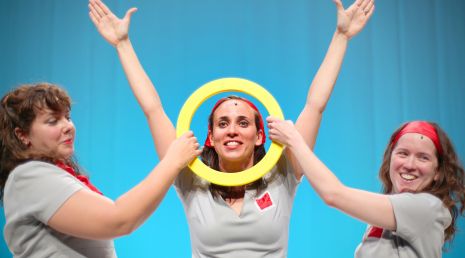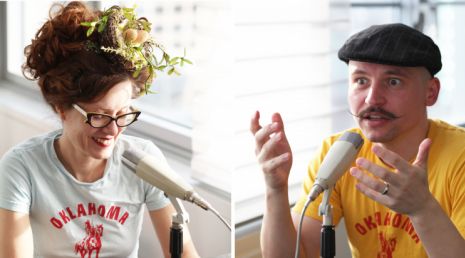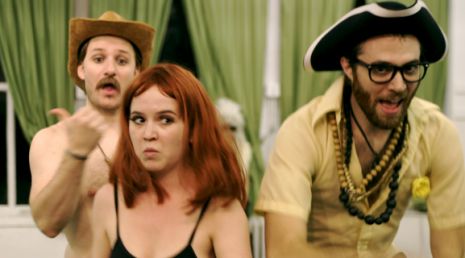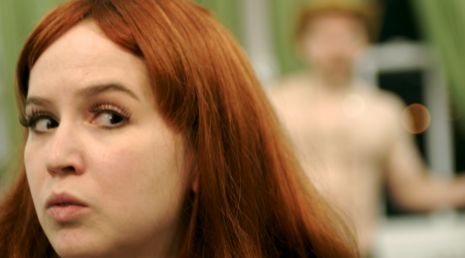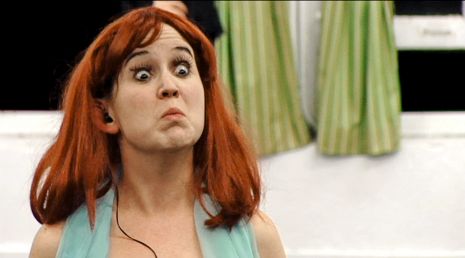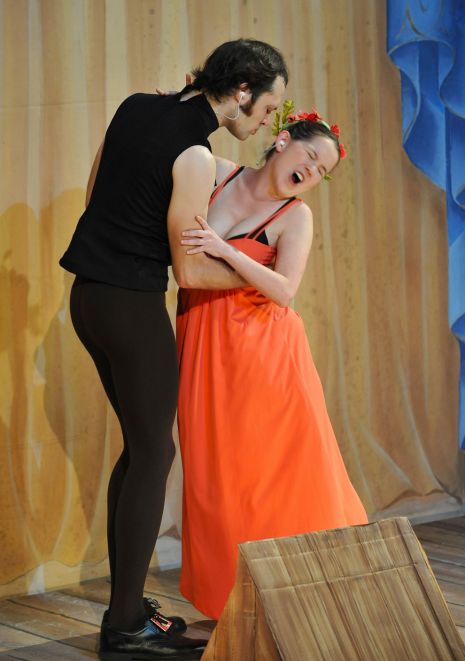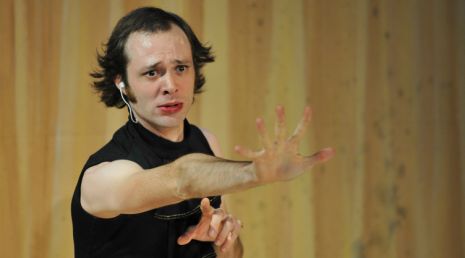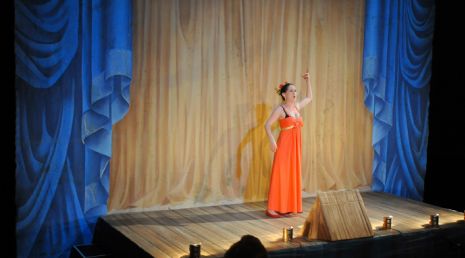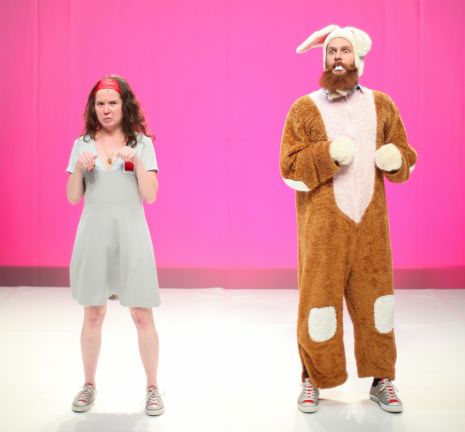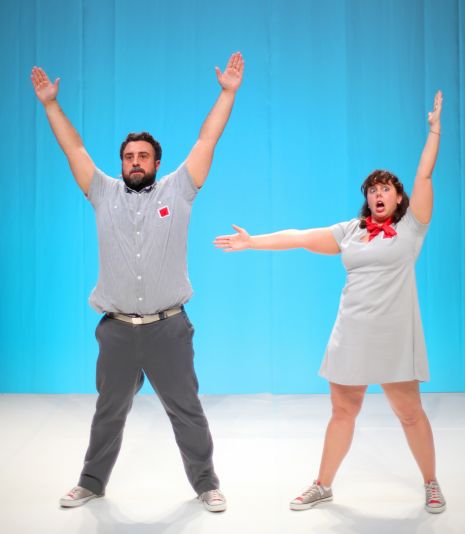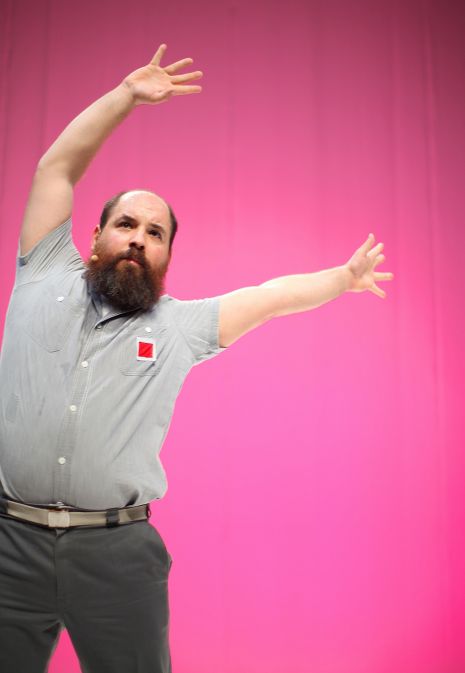About Pavol & Kelly
The idea of the lone genius continues to be unmasked as myth. Collectives and collaboratives making devised theater have become the path and the space where some of the most inventive, frisson-causing work is rising. Kelly Copper and Pavol Liska, the first duo to win the Alpert Award in Theatre since the prize began in 1995, are co-directors and founders of the performance ensemble, Nature Theater of Oklahoma.
The NTO - New York based - takes its name from Franz Kafka's Amerika.***
In their own words: “Nature Theater of Oklahoma has been devoted to making the work we don’t know how to make, putting ourselves in impossible situations, and working from out of our own ignorance and unease. We strive to create an unsettling live situation that demands total presence from everyone in the room. We use the readymade material around us, found space, overheard speech, and observed gesture, and through extreme formal manipulation, and superhuman effort, we affect in our work a shift in the perception of everyday reality that extends beyond the site of performance and into the world in which we live.”
Known for their intense collaborative processes, their physicality, their unflagging explorations, and durational works, NTO performances draw as much from conceptual art as performance art, as much from dance as from what the nature of “theater” might be.
What follows is a portion of Copper and Liska’s exceptionally clear-eyed response:
“Our work has evolved from a preoccupation with the most basic form and function of theater. We’re always looking at theater from an extreme distance and with a deep curiosity about why it happens. What can it mean?
What are the rules? If I [we] take away an element that seems to be essential to this experience, what is revealed in that absence? We start most of our work with a basic question – not a script or an idea. Poetics: a ballet brut was generated from the question “Can we make work without a text?” Pavol and I [Kelly] both come from a playwriting background, and so we questioned the primacy of text in performance. We placed a restriction on ourselves that we would write not a word, but would instead, working with 4 actors and a roll of dice, decide a duration for the performance, which actors were on stage, and also their (shifting) locations. We moved bodies around on stage for weeks, and asked “Is this enough?" Eventually we added randomized gesture and emotion to the score. As the show developed, we used music to mark time, and gradually movements and gestures became dance. We realized we were making a dance performance.
In the absence of text, most importantly, we discovered that there was no pretending, and the actors were incredibly present because they were performing a real task (dance), and none of them had any experience dancing, so the work was evident, compelling, dramatic – all without generating any fictional character or story – or any fiction at all.
For our next project, No Dice, we wanted to see if we could elicit the same presence and performance from the actors, this time using text. We knew, however, that our actors were very comfortable speaking and memorizing text, and we were too comfortable writing it, so we decided to remove that proficiency, and to again put ourselves into a state of not knowing how to proceed. The biggest restriction we placed on ourselves was that the text had to be generated orally and socially, without being written on paper. Pavol started calling friends and family who had agreed to be recorded for this project, on the phone, and we eventually generated over 400 hours of material from which we worked.
Because we were interested in the type of hyper-present performance we were able to achieve in Poetics when the actors were working at something they did not know how to do, we decided that they needed a similar challenge. For this show, they would not memorize the text, but the text would be transmitted to them through headphones and they would have to replicate the exact language and timing that they heard in the recording.
Because we weren’t dealing with remembering and memorization, it shifted the performance completely into the present moment, and the actors (and we) were in a permanent state of crisis. We were working with a very poor material (casual recorded speech), which we then had to translate into a theatrical performance.
As we were not wasting any time memorizing text, the work proceeded quickly, and our focus shifted to bigger questions about the nature and purpose of acting: What does an actor do other than memorize and regurgitate text and pretend to be someone else? Questions about language: What kind of language is appropriate to perform? And if this language is not appropriate to theater (having no dramatic arc, again no plot, no resolution), what must we do to transform it or to transform the audience so that they perceive it as theater? Can we use theatrical trappings (wigs, costume, accent…mask) to shift perception of this material?
As we’ve progressed in our work, we maintain a conscious effort to keep ourselves unbalanced by working on every show with a new formal challenge. Our current project, Life and Times, is a multi-episode opera. When we started we had no idea how to make an opera. We asked an actor who had no experience writing music to compose the score. When we started this project only one of the performers had any experience singing, and everyone in the company learned from doing - how to sing, how to harmonize.
We try to place ourselves and our actors always in a crisis, always a state of not knowing, and we believe in putting the audience in a crisis along with us. Most of our work is on average at least 4 hours long. Our current project, Life and Times, when we perform the first 4 of 10 episodes back to back is 10.5 hours, and will be 24 hours in performance when completed. These are long plays. Problem plays. We’re interested in a kind of performance that can effect permanent change in the audience as well as in the actor, and to do that, we believe, takes time and a certain level of difficulty and discomfort. The audience has to move beyond considering the entertainment value of the work, into a real involvement in the performer’s struggle to render an unaesthetic material into art, to create meaning from something that might appear to be entirely meaningless.
This is the ambition behind all our current work.
They wrote:
In Episode 1 there is also a prompter in the pit who is prompting the dances live. 90% of the dance in this show is unscripted and chance generated. Every night before the performance, the prompter shuffles a deck of cards consisting of 34 separate 4-count dance phrases. The actors are shown cards during the performance and choose when to insert a dance phrase before moving on to the next card. House lights remain on for the performance, and the actors can see the audience and use the audience to prompt emotion and facial expression during the show. We treat facial expression and emotion as contagious elements in the performance. The actors are constantly looking for emotional cues in the audience, and then mirroring back at the audience what they receive from the stage. In both instances, the information from the audience and the prompter is used to ground the actor in a real task in the present moment. They are using this information to open up the text in a way that transforms the text and the audience.
In Episode 2, the stage is again raised to elevate the actor, but there is no pit band. The choreography is set (not prompted live), but the level of difficulty is quite high, and the choral singing and harmonies are such that there is little room for error for the performers. It’s a very mixed cast, and yet they all have unison dances and harmonies to accomplish. In addition, we have a chorus of locals who also must sing complex harmonies and dance in unison. We re-cast this chorus in every location where we perform. Every night is a challenge.
In both Episodes there are screens behind the actors onto which we project the text for the show, in the same way that libretto is often projected in conventional opera. We want to put the text on display to further formalize the type of casual, conversational language we work with in these shows.
*** A young immigrant looking for a job, spots an advertisement: "Personnel is being hired for the Theater of Oklahoma! The Great Nature Theater of Oklahoma is calling you! It's calling today only! If you miss this opportunity, there will never be another! All welcome! Anyone who wants to be an artist, step forward! We are the theater that has a place for everyone, everyone in his place…!"


